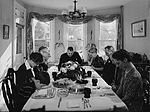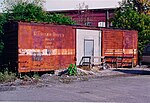Murder of the Haines family
On May 12, 2007, Alec Kreider, a 16-year-old high school student at the time, murdered his classmate and friend Kevin Haines, his father Thomas Haines, and mother Lisa Haines in their home in Manheim Township, Pennsylvania. Kreider was arrested a month later on June 16, 2007 and was charged with three counts of first degree murder. He pleaded guilty to all charges, and was subsequently convicted on all three counts and sentenced to three consecutive life sentences without the possibility of parole. Kreider later became eligible for a re-sentencing hearing following the United States Supreme Court's 2012 decision in Miller v. Alabama, which held that mandatory sentences of life without the possibility of parole are unconstitutional for juvenile offenders. On January 20, 2017, Kreider died by suicide by hanging himself in his prison cell, before the resentencing hearing was scheduled.
Excerpt from the Wikipedia article Murder of the Haines family (License: CC BY-SA 3.0, Authors).Murder of the Haines family
Peach Lane, Manheim Township
Geographical coordinates (GPS) Address Nearby Places Show on map
Geographical coordinates (GPS)
| Latitude | Longitude |
|---|---|
| N 40.091472222222 ° | E -76.3115 ° |
Address
Peach Lane 79
17601 Manheim Township
Pennsylvania, United States
Open on Google Maps





